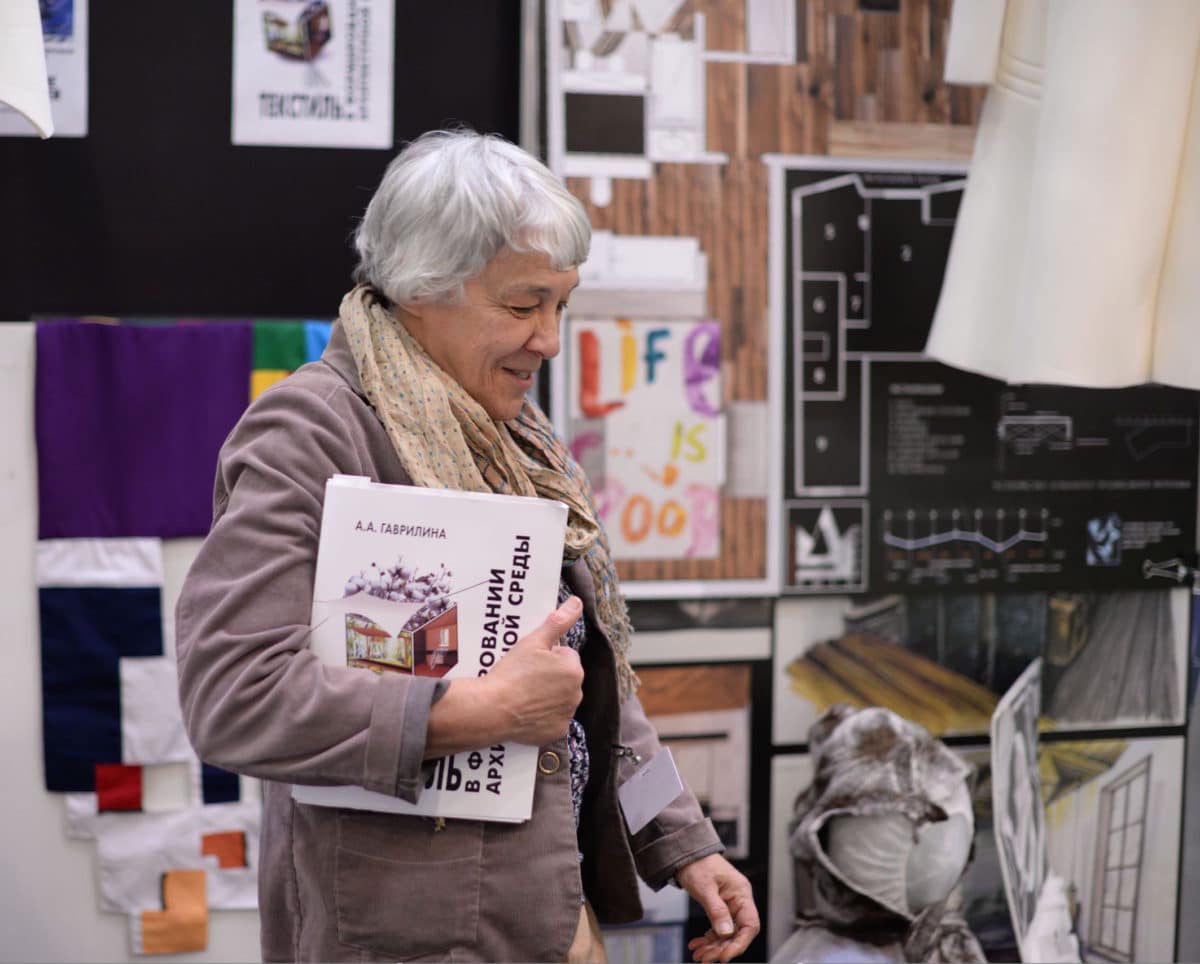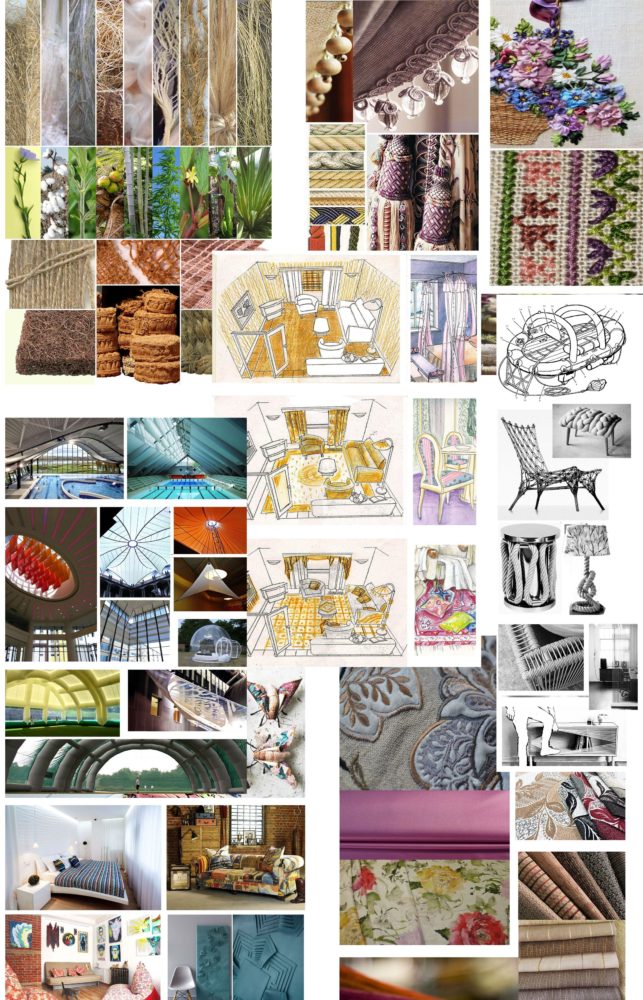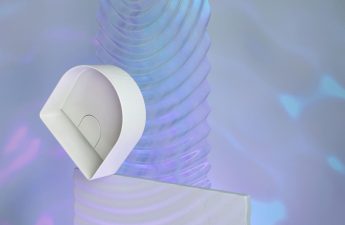Contemporary architects and designers atdesigning public and residential interiors are constantly involved in the field of textile design, creating unique objects, products and items with a textile component, and often in a significant amount. The design of textile furnishings and interior furnishings in isolation does not possess the large-scale power of architecture. However, together with it, he forms an architectural and design environment that can have an impact on a person due to the direct connection between him and architecture in terms of comfort and nuances of emotional impact. For example, in textile architecture, the variety of options for including soft materials in fencing is especially great and varies in extreme limits - from a site slightly covered with a canopy to rooms completely enclosed by multi-layer walls.  The book of Anna Alexandrovna Gavrilina -architect, designer and teacher - is distinguished by a comprehensive consideration of all forms of the existence of textiles in the architecture and design of external and internal spaces. Textiles are used for enclosing structures and filling the interiors of capital buildings, pre-fabricated movable structures, temporarily used pavilions, tents and light shelters. Soft materials are widely used in manufacturing, agriculture, advertising, festive decoration and so on. Chapter 13 covers the basics of designing a textile interior. These include:
The book of Anna Alexandrovna Gavrilina -architect, designer and teacher - is distinguished by a comprehensive consideration of all forms of the existence of textiles in the architecture and design of external and internal spaces. Textiles are used for enclosing structures and filling the interiors of capital buildings, pre-fabricated movable structures, temporarily used pavilions, tents and light shelters. Soft materials are widely used in manufacturing, agriculture, advertising, festive decoration and so on. Chapter 13 covers the basics of designing a textile interior. These include:
- tectonic potential of textiles in the imaginative solution of the architectural environment;
- features of the perception of textiles in the elements of the environment;
- social reference points in textile design elements of the architectural environment.
 The textile component brings its own specificity to theseinterconnection due to the fact that traditional structures and building materials that form rigid forms differ in many respects from textile ones - soft and plastic. The conditions for creating an integral system are considered. Including:
The textile component brings its own specificity to theseinterconnection due to the fact that traditional structures and building materials that form rigid forms differ in many respects from textile ones - soft and plastic. The conditions for creating an integral system are considered. Including:
- the condition for creating a coherent system of "unity of different";
- the condition of conformity of "quantity of textiles" to the specifics of compositional constructions;
- the condition of predetermining the mobility of ARCHTEX in a single structure.
Textiles in the structure of elements of the architectural environment are considered separately:
- composite connection of elements in the structure of the interior;
- textiles in the structure of fences, means of spatial designation, fixation, communication and division;
- Textiles in the composition of elements of filling the environment;
- textile design in the composite connections of objects of decoration.
 Besides the search for aesthetic expressivenesselements of the environment in the structure of the methodology and meaning of design, it is proposed to include a renewed perception of space with a special attitude to the textile component and understanding of its role and capabilities in the formation of the living environment. The book covers the topic of textiles widely - from the influence of the environment and landscape on the use of textiles in the architectural environment to the implementation of projects for textile decoration. The content of the book provides the basis for an individual approach in finding not only a volumetric-spatial solution, but also creating a predictable, emotionally perceived architectural environment. And the methodological principles outlined in the book have been tested for ten years in the process of teaching at the Higher School of Environmental Design of the Moscow Architectural Institute. The textbook can be purchased at the "Architect's Shop" (Kuznetsky Most St., 13. Entrance from Rozhdestvenka St.).
Besides the search for aesthetic expressivenesselements of the environment in the structure of the methodology and meaning of design, it is proposed to include a renewed perception of space with a special attitude to the textile component and understanding of its role and capabilities in the formation of the living environment. The book covers the topic of textiles widely - from the influence of the environment and landscape on the use of textiles in the architectural environment to the implementation of projects for textile decoration. The content of the book provides the basis for an individual approach in finding not only a volumetric-spatial solution, but also creating a predictable, emotionally perceived architectural environment. And the methodological principles outlined in the book have been tested for ten years in the process of teaching at the Higher School of Environmental Design of the Moscow Architectural Institute. The textbook can be purchased at the "Architect's Shop" (Kuznetsky Most St., 13. Entrance from Rozhdestvenka St.). 


